Healthy Living
Texting while thriving
May 22, 2014
We’re a nation of texters, LOL’ing our way to instant (and addictive) connection and communication with those around us.
But those messages don’t have to be mundane, goofy or superficial. In fact, some of them have the potential to save—or at least improve—lives.
Beginning in June, members of Dr. Theodore Friedman’s obesity group at the county’s Martin Luther King, Jr. Multi-Ambulatory Care Center will begin receiving text reminders, tips and other information designed to empower them to stick to health goals. In the new program, the mobile phone acts as a virtual health coach between visits to the doctor.
Maybe it’s a reminder: Zumba class at 4 p.m. Or this techno-friendly nudge: “Did you meet your goal of eating a healthy breakfast today?” Or it could be a “mood” question: “How did you feel when you found out that you had high blood pressure?” If you chose “confused,” another text assures you that your feelings are normal.
“This is a way to harness technology that everybody is using and embracing,” said Dr. Ellen Rothman, interim medical director for the health center. The technology does not allow for live text conversations with the doctor, but between appointments, an automated reminder is next best thing, Rothman said.
This week the County Board of Supervisors approved an agreement between the care center, Charles R. Drew University of Medicine and Science and CareMessage, Inc. to begin a pilot program with about 200 patients who are part of the obesity group, which has been in existence for about 16 months. The initial $500-a-month program is paid for with grant funds from Drew University so there is no direct cost to the county.
“We are going to break down…therapeutic goals into bite-sized pieces,” Rothman said. “A goal might be: I’d like you to walk for 30 minutes a day. I’d like you to cut out that cereal and milk at bedtime that everybody thinks is so healthy; I’d rather have you eat a slice of bread with some peanut butter that’s more filling and nutritional.”
The CareMessage program is not set up to offer advice quite as personalized as Rothman’s. But it can provide a menu of customizable programs designed for specific problems. Options include teen pregnancy, stress management, stress monitoring, smoking cessation or nutrition.
During an initial consultation with a medical professional, the patient will work with the doctor to set up his or her own mobile device to receive text messages. The patient can choose the frequency of reminders or customize a diet or exercise program to their age, weight or fitness level. CareMessage programs are available in English and Spanish.
Friedman chose the obesity group for the pilot because obese patient health care often calls for lifestyle changes rather than medications. That’s where the text-coaching can help, he observed.
“Obesity is not a medical disease,” Friedman said. “This is all about motivation.”
While the text messaging program has not yet begun, current hospital efforts and research point toward potential success. Low-income patients may not have computers or land-line telephones, but 70 to 80% of the care center’s low-income patients have mobile phones with texting capability. “And that’s going to go up each year,” Friedman said.
The facility has seen great improvement in the number of patients showing up for scheduled appointments if they get telephone reminders, but calling is labor-intensive and often results in no answer. Automated texts would not only save time and effort but could also reach a greater number of patients.
If the program expands, the technology may also make it easier for the hospital to gather survey information, too. Paper survey forms can be off-putting but with the new system, “you can do it on your phone while you are waiting for an elevator,” Friedman said.
But key for obesity patients, doctors say, is increasing the odds of lifelong behavioral changes. Among MLK’s economically disadvantaged clients, doctors say they’ve observed an uptick in health literacy over the past 15 years. Still, misinformation abounds, including a widespread belief that clear soda is healthier than colored soda.
“I like the idea of touch points, or teachable moments,” Rothman said. “We have limited resources and a lot of patients. It’s an interesting opportunity to catch people in their teachable moments.”
Posted 5/22/14
Staying strong for the marathon
March 6, 2014
Dr. Seth Gamradt is director of orthopedic athletic medicine at Keck Medicine of USC and team physician for USC athletics. Here’s his quick rundown for surviving Sunday’s race:
Fuel: It is critical to fuel your body before the race. Eat high carbohydrate meals (80 percent of intake) for several days prior to the race to build up your store of glycogen, a crucial energy source for your body. On the morning of the race try to eat a 500-800 calorie breakfast 2-3 hours before the race. Limit fiber to avoid mid-race gastrointestinal upset. Predictability is key: eating foods you know and that worked well on your long training runs is critical for a calm stomach and high energy on race day.
Shoes: It seems obvious, but avoid changes in equipment on race day, especially shoes. Wearing your tried and true runners will help to prevent the foot pain and blistering that are common in long-distance running.
Hydration: Before the race, pay attention to urine color, aim for light yellow as a sign of adequate hydration. Although sweat rates vary from runner to runner, a good guideline for hydration is 6-8 ounces of fluid every 20 minutes. Avoid over-hydrating, which can lead to stomach upset. Make sure your race-day hydration consists of energy drinks containing carbohydrates and electrolytes and water. Consuming water alone during the race can lead to hyponatremia, which is caused by dilution of the blood’s sodium level and can be very dangerous.
Energy Gels/Bars: Commercially available pre-packaged carbohydrate sources are an important fuel source in triathlon and distance running. Again, familiarity is key to avoid race- day stomach upset, so stick with energy snacks you’ve consumed during your training. Consume one 45-60 minutes (with water) after the race starts and every 45-60 minutes thereafter.
Lubrication/Skin Protection: Lubricate sensitive areas with anti-chafing, anti-blister products. Believe it or not, severe blistering or chafing can end your race prematurely. For sun protection, apply sports sunscreen that protects against UVB and UVA rays at least 30 minutes before running, and consider wearing sun protective clothing made specifically for running.
Pace: The adrenaline of the race start will lead to the possibility of starting too fast. Begin your pace near or slower than your typical pace from your long training runs to avoid a late race flame out.
Pain: You may experience pain, soreness, muscle ache and fatigue on race day from training. If you typically take non-steroidal anti-inflammatory drugs (NSAIDs – Advil, etc.) or acetaminophen (Tylenol) before training runs, do not change this on marathon day. However, if you have not been using these over-the-counter medications, race day is probably not the time to experiment.
Danger Signs: As mentioned, some soreness is expected on race day. However, if you begin to experience sharp pain with each step, swelling in a joint, escalating pain anywhere in your body or you begin to limp, it is not advisable to push through these types of symptoms and finish the race. In addition, confusion, light-headedness, chest pain, and shortness of breath all can be signs of a significant medical issue—seek medical attention immediately.
Completing the L.A. Marathon is an important goal you have set for yourself. Make sure you do the things on race day that support the training you have done up to this point and you will have the best opportunity to hit the finish line feeling like a winner!
A healthy helping of thankfulness
November 22, 2013
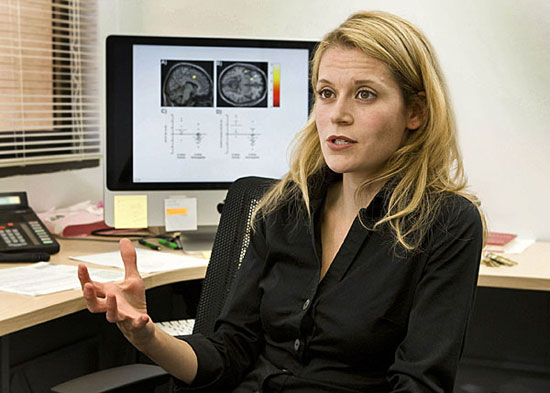
Naomi Eisenberger of UCLA is among the researchers working to expand our understanding of gratitude.
Giving thanks—it’s not just for the fourth Thursday in November anymore.
Researchers in the burgeoning field of gratitude science are finding a host of psychological and physical benefits associated with feeling and expressing thankfulness.
Gratitude has been linked to reduced depression, increased optimism, fewer physical ailments and more of that feel-good neurotransmitter dopamine in the brain.
It’s not all new—cultivating an “attitude of gratitude” has long been a part of 12-step addiction recovery programs—but there’s growing excitement about the expanding frontiers of such research and about finding new ways to scientifically document the effects of being thankful.
At UCLA, for example, Naomi Eisenberger, an associate professor of psychology, is in the midst of a project in which the participants—women ranging in age from 30 to about 60—go through a six-week “gratitude course” involving writing about things for which they’re thankful. Blood samples taken before and after the course will be compared to see whether inflammation levels, linked to a number of chronic diseases, have been affected by the gratitude exercise.
“We want to see in this study whether this gratitude intervention can actually reduce some of the inflammatory activity that we’re seeing in these individuals,” Eisenberger said.
Eisenberg’s research is part of a broader effort by the Greater Good Science Center at UC-Berkeley to “expand the scientific understanding of gratitude.” The Center, with funding from the John Templeton Foundation, last year awarded $3 million in grants to researchers across the country for a wide range of studies, including exploring how gratitude affects romantic relationships, healing after a heart attack, health and resilience in aging, and what people choose to purchase—experiences vs. material objects—in a “consumerist society.”
“This research is exponentially growing and we hope can have a continued impact in the world,” said Emiliana Simon-Thomas, the center’s science director. “Gratitude isn’t a new idea, right? There’s certainly a long tradition of different philosophical frameworks or religious traditions that embrace and promote gratitude practice. But for many it’s important to also have this empirical base [to demonstrate that] this is something that serves ourselves and our communities in a profound and measurable way.”
Even as the science expands and new discoveries proliferate, one fundamental remains the same: practicing gratitude is free and accessible to just about everybody.
“It’s shocking how simple it is,” Simon-Thomas said. (Some tips on getting started from the Greater Good website are here and here.)
But here’s something to keep in mind if you’re counting your blessings around the Thanksgiving table this year: it seems that not all gratitude is created equal.
“What the research is starting to uncover,” Simon-Thomas said, “is a pattern showing that gratitude towards people, particularly gratitude expressed—not just felt, but expressed—is actually the most powerful form of gratitude, one that has the most bang for your buck in terms of its impact on your day-to-day psychological experience.”
Marvin Southard, director of the Los Angeles County Department of Mental Health, sees a “use-it-or-lose-it” pattern emerging in some of some of the recent research into the workings of the brain.
“It’s like a muscle. If you use certain muscles, they get stronger. The muscles that you don’t use get weaker,” he said. “It’s the same thing with the way the neurotransmitters work in our brain…There actually has been some clinical work done to show that focusing on positive things, cultivating a sense of gratitude for the things that have happened in one’s life, even for people who are suffering from a chronic illness, produces better health outcomes for those individuals.”
In some ways, the new gratitude research is less about re-inventing the wheel than providing giving scientific credence to something that’s long been a part of the therapeutic experience.
“The sense that things like meditation and gratitude are good for you is common sense in a certain sort of way,” Southard said. “And I guess what ended up surprising me is that there seems to be so much scientific neurological research that supports those things that in the past we would have just taken for positive common sense.”
Robert Emmons, a UC-Davis psychology professor and author widely seen as the foremost pioneer of gratitude research, said the subject has exploded both in the popular imagination and in research because it works.
“The topic has become popular because people realize what science is now proving—that there is remarkable power in gratitude to heal, to energize, and to change lives,” Emmons said in an email. “There is a new generation of gratitude researchers out there who are examining the health effects of gratitude. Some of the findings are really amazing. They are using state-of-the-art measures of biomarkers of health and aging.”
And how do the mental health and neuroscience professionals themselves get their gratitude on?
In Simon-Thomas’ case, a nightly game of “Rose, Bud, Thorn” around the family dinner table is just the ticket.
“Rose is something that you’re really grateful for, that you want to think about and appreciate,” she explained. “The bud is something that you’re looking forward to, that you’re excited about happening in the future. The thorn is something that’s difficult that happened…It’s nice to do every day. It sort of keeps us all in touch and gives us more insight into what’s going on with each other and with ourselves.”
Emmons watches how he communicates: “I like to use the language of gifts. Think of the benefits you received today as gifts. Relish and savor the gifts you have been given. That’s what I do and what I suggest people try.”
As for Southard, he’s found something that serves him well, even on those marathon board meeting Tuesdays at the Hall of Administration.
“I meditate twice a day and at the end of each session I try to be conscious of the blessings in my life—even on Tuesday.”
Posted 11/22/13
A Sunset stroll
November 14, 2013
When it comes to challenging our car culture, massive events like CicLAvia, with its 100,000-plus cyclists, send a loud message about the growing momentum and demand for alternative transportation. But before there was CicLAvia, there was the more modest—but equally committed—Great Los Angeles Walk, which has been putting one foot after the next on L.A.’s most famous streets for the past 8 years.
Michael Schneider has organized the walks since 2006, when about 30 to 40 brave souls met to tackle all 16 miles of Wilshire Boulevard. Walkers now number around 300 each year.
“It always sounds daunting to people who haven’t done it before,” Schneider said. “But it’s not a race. It’s about taking your time and exploring. I come back with hundreds of photos of things that you normally miss.”
Taking a slower, closer look at L.A.’s street life is a motivating factor behind the walk, an outgrowth of local historic trips that Schneider used to organize. After Wilshire, the event sauntered along a new route each year, including Hollywood and Pico boulevards and Melrose Avenue.
On Saturday, November 23, the walk will take on that most iconic of L.A. thoroughfares, Sunset Boulevard. Schneider says the boulevard’s streetscapes have plenty to offer, from the boutiques and eateries of Silver Lake to the legendary night clubs of the Sunset Strip.
Walkers will embark at 9 a.m. from the “Lady of the Lake” statue in front of Echo Park Lake. They’ll follow Sunset westward to the edge of Beverly Hills before turning south on Whittier Drive to Wilshire, where they’ll head west to the statue of Saint Monica at Santa Monica Beach. “We’re going from statue to statue,” Schneider said.
The Great L.A. Walk has a very SoCal swagger. All comers are welcome, including dogs and kids, and they’re encouraged to break into groups, walk at their own pace and tackle as much or as little of the 17.8-mile route as they want. The event’s Twitter account will be updated throughout the day with the location of the group’s nucleus, should latecomers want to jump in along the way.
Walkers will be responsible for their own safety during the event, which takes place on sidewalks only. Getting there and back is also walkers’ responsibility; Schneider said many choose to take public transportation, while others join friends and station cars at each end of the route.
Those are the basics, but more is forthcoming on the Great L.A. Walk blog, where Schneider said he will announce an opening speaker, identify the location of an official after-party and add other details in the coming days. On the day of the walk, flyers with historical information and landmarks will be distributed.
With the holidays fast approaching, Schneider said, this might be a way get a head start on the gravy and pumpkin pie. “It’s a way to get out there and get some exercise,” he said, “before we gorge ourselves on Thanksgiving.”
Posted 11/14/13
On the menu, downsized dining out
September 12, 2013
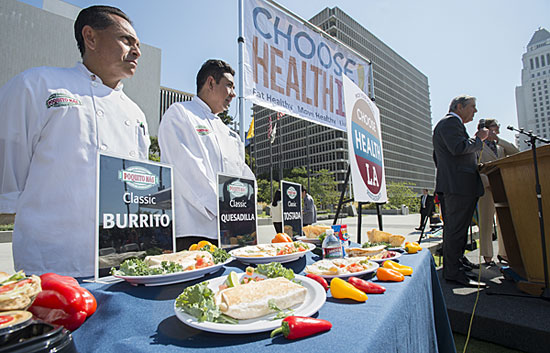
Full-sized restaurant fare along with smaller portion alternatives were on display at news conference.
At Poquito Más eateries, they like to boast that they “always give you a little more than anyone else.”
These days, a little more can also mean a little less.
And, according to founder and owner Kevin McCarney, customers are eating it up.
The chain started offering trademark “petito” servings of its seven most popular dishes about eight years ago. “The epiphany was that people come in different sizes; portions should, too,” McCarney said. “I’m 180 pounds, my wife’s 105. We couldn’t possibly finish the same portion.” Business boomed as less-stuffed patrons came around to dine more frequently at Poquito Más’ 11 outlets.
Today, McCarney, who started his first restaurant in Studio City almost 29 years ago, finds himself on the cutting edge of the latest trend in public health.
Poquito Más—along with Subway, Lido di Manhattan Ristorante, Deano’s Gourmet Pizza, Localita and other restaurants around Los Angeles offering slimmed-down portion options—is part of a first-ever “healthy restaurants partnership” with the county Department of Public Health.
It’s the latest push in the county’s high-profile fight against obesity that has included consciousness-raising on calorie counts, an assault on unhealthy food in preschools, and a showdown over sugar in soft drinks.
With nearly two-thirds of county residents overweight or obese, the educational campaign has significant public health consequences.
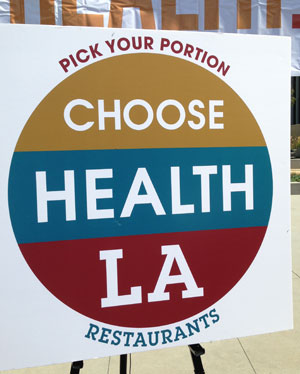
Public health officials urge you to look for this window decal. An enlarged version was on display at news conference Thursday.
“This is a terrible epidemic,” Dr. Jonathan E. Fielding, the county’s director of public health, said in announcing the new portion-size program at a news conference Thursday. While he emphasized there is no panacea to solving the problem of obesity and its related diseases, he said initiatives like this can make a big difference. “This is very important because when people go out to eat, they generally consume more calories than they do when they eat at home, and people are eating out more and more.”
Restaurants in the program will display a Choose Health L.A. window decal that includes the slogan “Pick your portion.”
“It’s a matter of pride to have this decal,” Fielding said, adding that he has assigned a dedicated staff member to assist restaurants in joining up. To qualify, restaurants must offer smaller portion options in addition to their regular fare; serve children’s meals that include fruits, vegatables, non-fried items and healthy drinks; and provide chilled water as a free beverage offering. (Details of how restaurants can apply are here.)
Supervisor Zev Yaroslavsky, a longtime supporter of programs that foster healthier eating choices, said the new effort will be effective because it will allow consumers to continue to chow down on tasty restaurant fare—even as they downsize the serving sizes.
“It’s not mandatory,” Yaroslavsky said. “We’re not forcing people not to drink heavily sugared drinks. …but we’re giving people an alternative…When the sandwich looks just as good at 700 calories as it does at 1,600 calories, people will opt for the lesser caloric intake.”
“The average family today goes out to eat in a restaurant four times a week,” he continued. “If we can offer a healthy alternative at the restaurants… we can make a huge impact on this issue of obesity, improve the quality of life for men, women and especially children, and save the taxpayers billions of dollars a year nationally, and tens of millions, if not more, locally.”
A key goal is helping parents make better food choices on behalf of their children, said Kim Belshé, executive director of the childrens’ advocacy organization First 5 L.A., which is also supporting the initiative.
“It is a disturbingly shocking statistic that nearly a quarter of low-income children three- and four-years-old in L.A. County are obese or overweight,” Belshé said.
Prices for the reduced portions will be up to the individual restaurateurs. McCarney, of Poquito Más, says his “petitos” are 60% of the size of the regular servings and cost 60% as much.
McCarney, who first fell in love with Mexican food after sampling a carnitas taco at an Echo Park car wash when he was 17, said all of his customers can benefit from the smaller menu options he offers in his restaurants—not just those who are watching their weight. There are days when they may want one of the “more opulent choices” available, like a full-sized scampi or ahi burrito, but other times when a scaled-down version will do.
In his view, it’s high time to forget the old adage about eating everything on our plates, anyway.
“I think that’s a mistake in today’s world,” he said.
Because of Poquito Más’ reputation as a health-savvy local restaurant chain, public health officials sought out McCarney when it was time to roll out the new portion size campaign.
Even as the word spreads, however, he says he’s not worried about competitors taking a page from his “petitos” playbook.
“It took me too long to jump on this,” McCarney said. “I’m just glad that other people are seeing the light.”
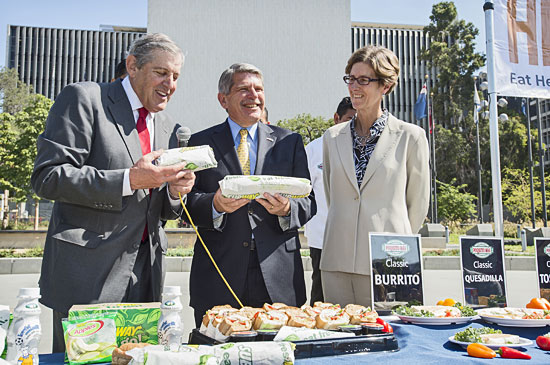
What's for lunch? Mulling choices are, from left, Dr. Jonathan E. Fielding, Supervisor Zev Yaroslavsky, Kim Belshé.
Posted 9/12/13
A blueprint for healthy living
February 5, 2013
On Tuesday, the Board of Supervisors adopted a new Healthy Design Ordinance that will change zoning and permitting requirements to promote walking, bicycling, community gardens, farmers’ markets and other elements of good health in future Los Angeles County developments.
Aimed at curbing the epidemic of obesity, diabetes and other diseases, the ordinance is the result of an expanding partnership between planning and public health officials to tilt this car-bound and fast-food-laden metropolis toward a more wholesome scale.
Among other things, the ordinance will require sidewalks in new developments to be shadier, wider and more walkable. It will also mandate bike parking in new projects and make it easier for communities to create community gardens and farmers’ markets, which will be required to accept CalFresh payments, formerly known as food stamps.
For more on the impact of the new rules, click here, and for the text of the ordinance, click here.
Posted 2/5/13
And hold the extra calories
October 4, 2012
Quick: How many calories should an average adult consume daily? Should growing boys and girls eat more than their parents or less?
If you didn’t know that 2,000 calories a day is plenty for most adults and that most children need even fewer, keep your eyes out for Los Angeles County’s latest front in the surging obesity epidemic—a sweeping new public education campaign aimed at getting people to reduce their food portions.
The initiative was launched last week in Spanish and English on billboards, buses, web banners and other media. And it’s coming none too soon, according to a new report from the Los Angeles County Department of Public Health.
In a survey released this week, public health officials found that adult obesity rates here have risen by 74% since 1997, when the county first began tracking the problem. Obesity now afflicts nearly a quarter of Los Angeles County’s adults, with rates in some parts of the county exceeding 30%.
In South L.A., for example, about one adult in three is obese now. In East L.A., the rate is 30.1%. In the Antelope Valley, which has the county’s biggest weight problem, the rate has more than doubled to nearly 35%—roughly the same as Mississippi’s. (The Westside, by comparison, has an obesity rate of less than 10%.)
The local findings correlate with trends across the nation, where the overall obesity rate—the percentage of people with an overall body mass index of 30 or higher—has reached epic proportions. Obesity is approaching tobacco use as the leading preventable causes of death in the U.S., and its attendant medical costs are estimated at $147 billion to $210 billion a year.
A recent state-by-state projection by the Robert Wood Johnson Foundation found that if Americans continue on the current trajectory, obesity rates could top 44% within the next two decades in every state in the nation, including California, and more than half of the states could have obesity rates of more than 50%.
The situation, which is not only shortening lives but threatening efforts to contain healthcare costs, has prompted national, state and local intervention. New York, which has been in the movement’s forefront, recently became the first city in the nation to ban the sale of sugary drinks larger than 16 ounces and has launched a push to get rid of sugary and fatty food in hospitals.
In Los Angeles County, initiatives have ranged from ads depicting the amount of sugar in non-diet sodas to campaigns to improve nutrition in day care centers and pre-schools. The result, the public health department report notes, has been “a hint of a decline” in children’s obesity rates.
But Paul Simon, Director of the DPH Division of Chronic Disease and Injury Prevention, says that, even at its current plateau, childhood obesity here remains a profound problem and that’s “no evidence the obesity epidemic among adults in the county is stabilizing.”
“The rate of increase may be slowing,” he says, “but it’s still going up.”
Consequently, health officials are going back to basics in trying to educate the public on the kinds of habits that make people overweight. The current campaign, expected to cost slightly less than $1 million, is being funded by a grant from the Centers for Disease Control and Prevention and managed by the county’s Choose Health LA campaign.
“Obesity is a problem that starts early,” says Simon, “and one that continues to get worse with time. So we are doing many different things to address it. Portion control isn’t the only intervention, but it’s an important one.”
Portion sizes have ballooned over the last two decades. (For an eye-opening quiz, click here.) Study after study has shown that larger portion sizes make us eat or drink more. Even a feeling of fullness won’t stop us.
“We’re wired to eat what’s on our plate,” says Simon. And, he says, most of us don’t have a clue how many calories we’re consuming. To test market their campaign, DPH convened two local focus groups, in Spanish and English, and conducted an online survey with nearly 700 Los Angeles County respondents. One of the most startling discoveries was that most Angelenos don’t even know how much they can eat—or feed their children—without gaining weight. Some respondents thought 4,000 calories a day was the recommended allowance, others were sure it was more like 500.
In fact, the U.S. Department of Agriculture estimates that adult women only need 1,600 to 2,400 calories per day, and adult men only need 2,000 to 3,000. Young children need only 1,000 to 2,000. And unless you’re an athlete, you should be saying “when” at the lower end of those ranges. A grand-slam breakfast, a 12-inch sandwich, three slices of pizza, a bowl of spaghetti with two meatballs, a double-double with large fries—for most people, any one of these could, in a single sitting, dish up half of a full day’s calories.
But a second discovery, borne out in other studies, was that too harsh or challenging a message would simply cause some people to tune out. So the county campaign took the unconventional step of including ways to cut calories from the kinds of meals people were actually eating, as opposed to the healthier food they should eat.
The campaign’s images are not of broccoli and kale, but of smaller burgers and fewer slices of pizza, shown with their respective calorie counts next to the motto “Choose Less. Weigh Less.” Simon says the message is not necessarily to give up fast food and big restaurant portions, but to consider splitting an order, choosing a smaller plate or asking the server to put half in a to-go bag before bringing your food to the table.
The campaign is expected to get a boost from the federal health care reform law, which was upheld by the U.S Supreme Court this summer. Among the pending requirements of the Affordable Care Act is one that will require calorie counts to be posted in all chain restaurants with more than 20 outlets. (California has had a calorie-count law for nearly two years. But its implementation has been slowed because the new federal law has pre-empted it, as it has a county ordinance championed by Supervisor Zev Yaroslavsky.)
Though the fast food industry has, in general, resisted the posting of such information, a few chains, such as Panera Bread and McDonald’s, have voluntarily begun posting calorie counts on menus. This summer, McDonald’s experimented with a “Favorites Under 400” promotion of menu items with 400 calories or less.
Simon says that, down the road, the county might be able to build on that commercial involvement by encouraging restaurants to broaden their range of small-plates, offer half-orders or give patrons the option, before their food comes to the table, to save half of their entrée in a take-out box for later.
Yaroslavsky, a supporter of the county’s anti-obesity efforts, says the campaign “is one of many public health initiatives the County of Los Angeles is pursuing to help make our communities healthier.”
“Our aim is to give people access to healthy foods and beverages where they live, work and play.”
Posted 10/2/12
Little parks, big impact
April 12, 2012

This artist's rendering shows how a new park next to a Hollywood Freeway off-ramp will look when completed.
Four of Los Angeles’ newest planned parks could fit comfortably into a tiny fraction of Griffith Park’s sprawling 4,210 acres.
But the new parks, ranging in size from ¾ of an acre to 2.8 acres, have grand, out-of-the-box ambitions of their own—and each could play a transformative role in the aesthetics, health and recreation of their communities.
The parks will be funded by $5 million in state grants recently awarded to the Mountains Recreation Conservation Authority, which will work with community groups to develop the new recreational expanses in Hollywood and Pacoima—both in the 3rd Supervisorial District—as well as in Elysian Park and Compton.
All of the parks promise to bring small-scale pleasures, along with forward-looking environmental features, to areas hungry for a little green space.
“I think that L.A. is just a concrete jungle. The parks are large and they’re far away. People have to drive to get to Griffith Park,” said landscape architect Jeff Hutchins, a principal in Mia Lehrer + Associates, which is working on the ¾-acre Hollywood project. “People don’t necessarily need basketball courts or running tracks. People just need someplace close by to sit and reflect and spend some time with their family.”
The Franklin/Ivar Park, to be created on a triangular parcel below the Vine Street off-ramp of the Hollywood Freeway, represents the power of consistent neighborhood involvement in getting such projects off the ground.
“We have absolutely zero green space in this neighborhood,” said Terri Gerger, who’s heading up the initiative for the Hollywood Dell Civic Association, a longtime backer of the project. “There is no park space for kids.”
The lot, originally acquired by Caltrans when the 101 Freeway was built, has been vacant since the 1950s. George Abrahams, an adopt-a-freeway volunteer who lives in nearby Beachwood Canyon, has devoted untold hours to clearing the property of debris and keeping its exuberant bougainvillea in check over the years.
Going through the lot, where homeless people and drug users once congregated, “was like an archaeological dig,” he said. “I pulled about five or six thousand needles out of that area.”
At the urging of the community, the Santa Monica Mountains Conservancy purchased the property from Caltrans for $162,100 in 2008, with a significant contribution from the developer NCA/Commonfund, help from private donations and funding from state Prop. 84.
Now the grant from the conservancy’s partner agency, the Mountains Recreation Conservation Authority, will deliver $2 million to transform the Franklin/Ivar site. Plans call for a “carbon eater tree screen” to help absorb and filter polluted air coming off the freeway ramp, a water reclamation feature, a solar-gathering shade area, a water fountain, a demonstration garden, an “adventure play area” for kids, public art, and even an amphitheatre and grotto. And there’ll be Wi-Fi—an important attraction, Gerger says, for students at nearby trade and technical schools who are expected to use the park along with local residents.
In Pacoima, the impetus for creating a park on another once-forsaken piece of land is part of the movement to create healthier communities by carving out appealing places for outdoor activity.
The Pacoima Wash Greenway-El Dorado Park project grew out of an earlier county Public Health PLACE grant to Pacoima Beautiful, which is seeking to improve the health of a community that experiences high rates of heart disease, stroke, asthma, diabetes and obesity—all consequences of a sedentary lifestyle in an area where recreational amenities are few. Nearby industrial plants contribute to poor air quality, and some children suffer from what the grant application describes as “Nature Deficit Disorder.”
While the planned park itself occupies just 1.2 acres, it’s part of a larger initiative that’s eventually expected to create a publicly accessible greenway all along the Pacoima Wash and link it to larger recreational areas like the Angeles National Forest to the north and Ritchie Valens Park to the south.
“It’s the connections that are important,” said Ken Frederick, project manager for Pacoima Beautiful.
The city-owned property will benefit from $1.075 million in grant funding to plant trees, develop a free play area in a natural grass meadow, build a trail loop and create a “stormwater arroyo” that will allow plants to naturally remove contaminants from water as it flows into the ground.
The other grant recipients are the Los Angeles River Marsh Park in Elysian Park, which is receiving $725,000 to add an open air picnic area and community gathering spaces to the 2.8 acre project, and the Compton Creek Natural Park at Washington Elementary School, which will get $1.036 million to bring children’s recreational amenities and learning gardens to 1.3 acres of vacant school property.
With their environmentally-friendly features, educational components and public health roles, the new parks promise to be a hard-working bunch.
“A park can’t just be a patch of grass and a baseball field anymore,” said Eric Bruins, a Mountains Recreation Conservation Authority projects manager who’s overseeing the Pacoima and Hollywood parks for the agency. “It has to do many more things.”
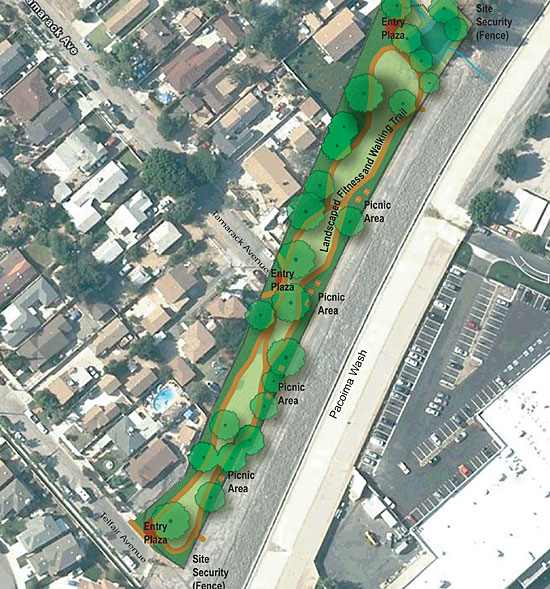
This illustration gives a sense of the green space that's about to sprout up along the Pacoima Wash.
Posted 4/12/12
Could be another wet L.A. Marathon
March 14, 2012
When the 2012 L.A. Marathon thunders through town on Sunday, March 18, you’ll either want to be right in the thick of it or way out of its path.
And in either case, you’ll probably want to bring an umbrella. Weather officials said a repeat of last year’s rain-drenched marathon may be in store. The latest from the National Weather Service on the coming cold storm is here.
This course map shows the marathon’s progression over its entire “stadium to the sea” route, starting at Dodger Stadium and finishing by the Pacific Ocean. These “turn-by-turn” directions are also useful. The 26.2-mile course will take participants through downtown L.A., Silverlake, Hollywood, Beverly Hills, Westwood and Brentwood, before ending in Santa Monica.
Rolling street closures will take place along the route, and additional street closures will be enforced to accommodate the event and all its accompanying fanfare. An overview of what to expect is here. There also will be lots of detours on bus routes.
If you decide to venture out to cheer on the runners, you can get there via Metro Rail and at least stay dry for that part of the excursion.
Posted 3/14/12




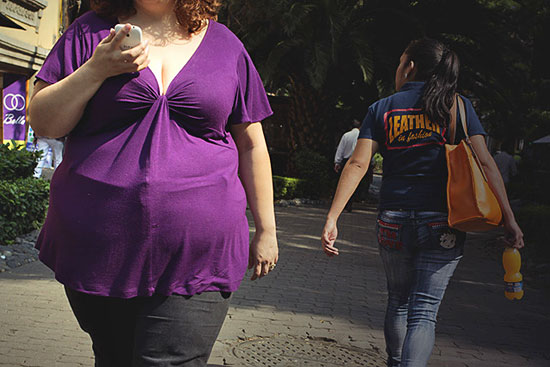
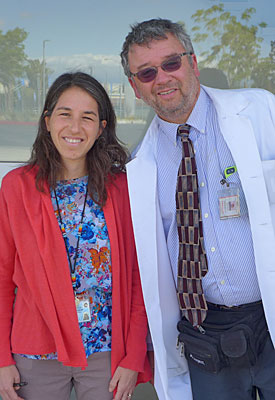
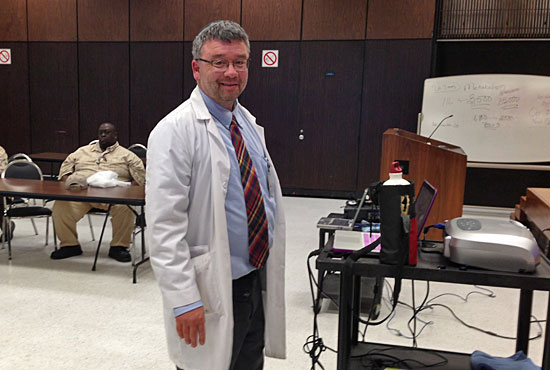


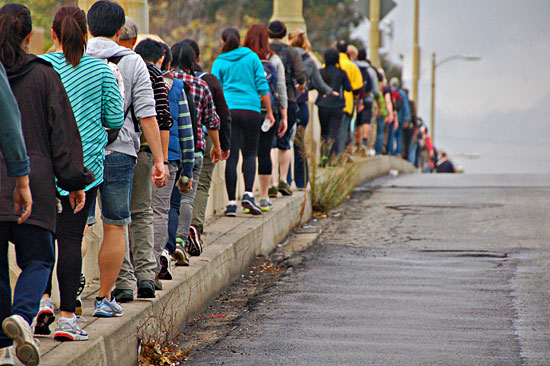
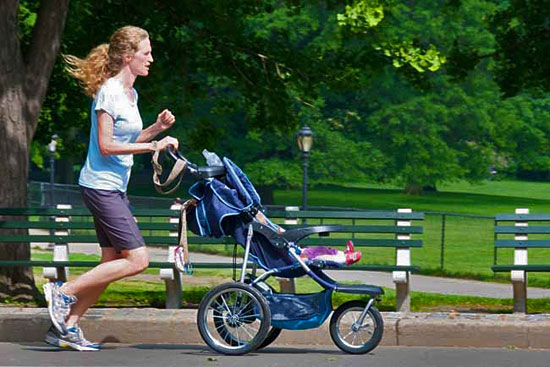
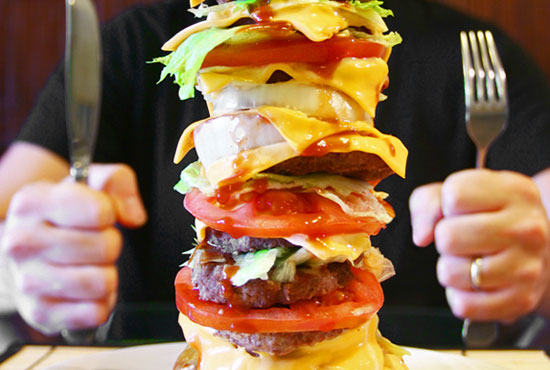
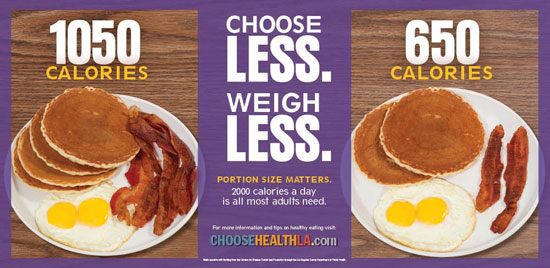
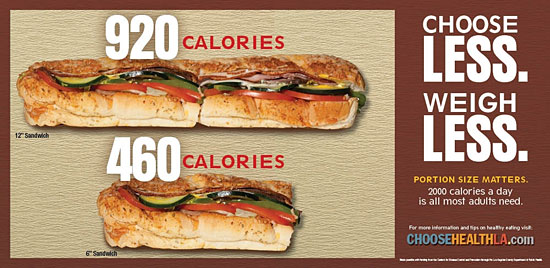
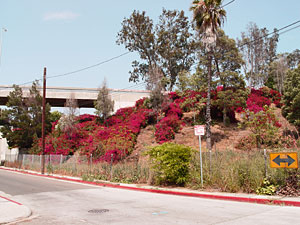







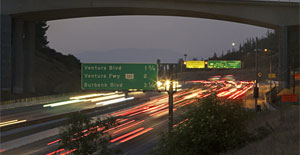
 405 bridge work causes a stink
405 bridge work causes a stink
